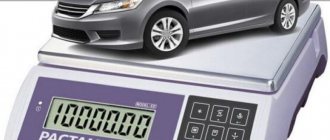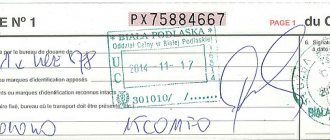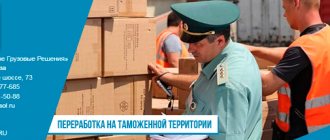Paintings are transported from one state to another for the purpose of display at exhibitions, restoration, and personal use.
Collectors purchase them abroad and take them to the Russian Federation, or, conversely, export these works of art from Russia. Paintings are a special type of cargo that may have cultural and historical value, so customs clearance has some specifics.
ATTENTION! We work only with legal entities.
Procedure for the export of cultural property
When exporting paintings, figurines, household items, ancient costumes, antiques and other works of art abroad, the age of their manufacture is first taken into account.
Packaging of an ancient icon
Exhibits up to 50 years old are considered modern works of art. They can be taken by anyone, anywhere. To do this, you must first issue a permit document (an expert opinion on the right to export), which indicates that this item is truly of no value and is not listed in the museum collections.
Exhibits over 50 years old that have artistic significance for the country or belong to the world cultural heritage fund have the right to be exported to public and private museums and galleries for the purpose of exhibiting in other countries, for example, for presentation at exhibitions, biennales, etc., as well as private collectors, officially owning the property rights to the item. In both cases, the export is temporary (for a clearly defined period). In this case, it is necessary to obtain an export permit from the Ministry of Culture and Rosokhrankultura (Federal Service for Supervision of Compliance with Legislation in the Field of Protection of Cultural Heritage).
Private collectors, after purchasing a valuable exhibit at an exhibition or auction, must register their ownership. Each temporary export from the country will require permission from the Ministry of Culture. In case of moving to a permanent place of residence in another country, it is necessary to draw up a permit package of documents, along with which the subject will also receive a new place of residence.
How to obtain a certificate for exporting paintings abroad
I would like to share information on how to obtain a certificate to export a painting abroad. When I had such a need, I had difficulties finding relevant information on the Internet. The information that I found turned out to be outdated, and I had to travel, find out and search on my own. I think my experience may be useful to someone. Of course, I don’t know whether the organization’s address or procedure will change in the near future, so I am writing what is available as of today.
I apologize for the quality of the photos, initially I took them just for myself on my phone. I decided to post them because in this case the informational value is important, not the artistic value.
I will not go into detail about the question “is a certificate needed for this or that painting?” I know that many people export and send works without any certificates, under the guise of posters, crafts, etc. In my case, oil paintings on canvas stretched on a stretcher measuring 1x1 m and 1x0.5 m will be exported to one of the European countries personally by the buyer as special cargo on an airplane. In this situation, the buyer and I considered it necessary to obtain a certificate. Moreover, graphic works on paper and watercolors were brought to my examination for examination. From a conversation with the owners, I realized that these works are valuable, and since they will be sent by the postal service, there are fears that they might be confiscated at customs due to the lack of a certificate. This is the opinion. I have nothing more to add to the question “should I or shouldn’t I?” Next I’ll tell you about the procedure itself.
Until recently, the design was handled by the Expertise Department of the Moscow Service for the Preservation of Cultural Property under the Moscow Department of Culture. There was a department on Arbat, but when I arrived there, I found out that there was no such organization anymore, and I was sent to the Autonomous Non-Profit Organization “College of Experts on Cultural Assets.” It is located at st. Zemlyanoy Val, 64, building 2. Directions: Taganskaya ring metro station. (Entrance from the courtyard, have a document to issue a pass. Office on the 1st floor, immediately behind the security post). Opening hours Mon-Fri 11-18, lunch 14-15. There I found out what was needed to issue a certificate, the list is in the photo, I will not duplicate it in the text.
So, my customer issued a power of attorney for me. She was also required to provide: a copy of the first page of the international passport and the Russian passport (the first page and the registration page). A copy of the Russian passport is not indicated in the list, but it is required if the certificate is issued by power of attorney. I took the power of attorney form from the office, it is simple in writing:
I took photographs of the paintings (simple “home” ones will do, no special studio photography is needed). The reverse side of the photograph is signed:
I filled out a list of two items, a sample from the stand:
I packed the work well and went for examination. It’s usually free there, and on both the first visit and the second there were 2-3 visitors. There is a barrier at the entrance to the yard, but you can drive in, you will be allowed to park your car in the parking spaces of the “College of Experts...”, you will have to pay 200 rubles. In my case with large paintings it was worth it. At the office I fill out an application according to the sample:
And I pay for the service of issuing a certificate (the terminal is located directly in the office, but charges a commission of 3%).
The paintings had to be completely unpacked to be presented to the expert. She looked for 1 minute and asked a few words about the paintings. Then I spent a long time and carefully repacking my meter-long canvases in front of the next visitors; I shouldn’t have worn a short dress and heels, but I thought about that late 
The received documents with the attached examination of the “College of Experts...” are sent to the organization directly involved in issuing certificates - the Territorial Administration of the Ministry of Culture of Russia for the Central Federal District.
After 5 days I called the Department of the Ministry of Culture, they told me that the certificate was ready. You must receive a certificate at the Office address: st. Ak.Koroleva, 21, building 1. For details, see the photo from the stand. When you reach the corner of this large old industrial building, go right, there is a corresponding sign above the entrance. The security guard at the entrance greeted me with the words: “Are you going to the casting? Then go to another entrance!” But I’ve already been to the casting. If you go to the left (where I first went), you’ll find yourself in another entrance, where castings for TV shows on Channel One take place.
You must receive a certificate at the Office address: st. Ak.Koroleva, 21, building 1. For details, see the photo from the stand. When you reach the corner of this large old industrial building, go right, there is a corresponding sign above the entrance. The security guard at the entrance greeted me with the words: “Are you going to the casting? Then go to another entrance!” But I’ve already been to the casting. If you go to the left (where I first went), you’ll find yourself in another entrance, where castings for TV shows on Channel One take place.
This certificate has no expiration date. The certificate is accompanied by my photographs of the painting, certified by a seal, as well as a certified list.
My customer will be taking out the paintings in the summer, I hope everything goes well!
***
After going through the procedure, I thought that there must be other ways to do an examination, not necessarily through the “College of Experts...”. But I found it convenient, quick and clear through them. If you know other ways, please share in the comments. 
***
And some additional information that may be useful:
— in case of sending by mail (transport company), the certificate is issued in the name of the sender of the parcel;
— if the person exporting the paintings does not have Russian citizenship, then a foreign passport with a valid Russian visa will be required;
— the issuance of a certificate can be expedited; for this, the expert opinion and a package of documents must be taken independently to the Department of the Ministry of Culture. The certificate can be obtained one day in advance (you may need proof of urgency with tickets, please check);
— if the certificate has already been issued to a person, but another person will actually be exporting, then you can issue a notarized power of attorney for the right to export. There is no need to reissue the certificate.
***
Thank you for your attention! I wish everyone more sales and rich foreign buyers!
Procedure for obtaining permission, timing and cost
Previously, the Ministry of Culture issued certificates. Today, the permitting document is an expert opinion
. Such paper can be obtained within 1-2 days (the procedure has been accelerated and simplified). You need to contact a panel of experts (independent or approved by the Ministry of Culture) or through a third-party organization that can provide this service as an intermediary.
Removal of items up to 50 years old. Send in electronic form: - a copy of your passport, - 2 photographs of the exhibit (front and back), - registered name, - name of the author, - date of manufacture, - material, - creation technique.
For example, for a painting the material can be: canvas-oil, cardboard-acrylic, canvas-acrylic; for sculpture: stone, plaster, bronze, cast iron, steel, aluminum; for vases: porcelain, ceramics, glass, etc.
Service cost:
3500 rubles.
Exporting art objects older than 50 years is somewhat more complicated. A painting may have no artistic value at all, but it can be passed down from generation to generation as a family heirloom.
In this case, you need to contact an expert and get a certificate stating that the item is of no significance, is not listed in museum collections, etc., and therefore can be freely exported from the country.
The assessment procedure takes up to 10 working days.
Service cost:
from 5000 rubles.
If the expert recognizes the item as valuable, with such a conclusion it is necessary to apply to the Ministry of Culture to obtain an export permit, providing documents on ownership (registered inheritance, deed of donation, etc.). If there are none, employees of the Ministry of Culture will make the appropriate requests (birth and death certificates of the author of the painting, as well as all family members to whom the item was transferred, up to the current owner). It is impossible to say exactly how long this will take. The cost will be payment of the examination, document and state duty for the services of the Ministry of Culture.
The preparation of the document took longer than the evaluation of the painting
The expert spent about 2 minutes examining my painting and wrote everything down in a template on the computer for about 20 minutes, while I sat and waited for the procedure to end. By the way, the expert needed the title of the painting to be included in the documents. I didn’t know and I just didn’t plan to name it, so I had to make it up as I went along.
With a “valuable” document and my “masterpiece,” I left the building with a smile, because the procedure seemed funny to me. After all, I quite seriously brought my indoor art to an expert and waited for it to be appreciated.
Document validity period
- The temporary export document is valid until the date indicated on it
. As a rule, this is the end date of the exhibition + 10 days, which are given to return the exhibit to its original place in the museum or gallery. - The document for contemporary art objects has no expiration date and is valid until the object is 50 years old. In this case, it is necessary to obtain a new document stating that the thing is older, but is of no value and is not a cultural object.
Plane, car, train - it doesn’t matter at all how you cross the border. A single law on the export of art objects applies to all types of transport.
Boxes for transporting art objects
What is needed to evaluate a painting?
I don’t know how it is now, but in December 2021 I was told to bring with me:
- Your picture.
- 3 color photographs of the painting, 10x15 format, on A4 sheets - one photograph on each sheet.
- International passport.
I went to print photos at a printing house near my house. For about 10 minutes I explained to the man how to arrange the photographs on the sheet, although I myself didn’t really understand when they explained this to me over the phone. We placed 10x15 pictures of the painting in the center of each sheet; we chose glossy paper for printing.
Upon evaluation, it turned out that the photographs should have been placed not in the center, but on top, and the paper should have been ordinary. But the expert still accepted my sheets
How to pack art and get through customs
- Small items can be packed in tubes (folded paintings), cardboard boxes or plywood boxes and taken on board as hand luggage. The customs officer will x-ray the package and ask you to present an export document. In case of suspicion, he may ask you to open the box.
- For large items, you must register a cargo space and go through the cargo terminal. This must be done in advance, a couple of days before departure, since you need to register the cargo, pay for the cargo space on board, and go through customs control. It takes a whole day, sometimes two.
There are situations when a customs officer does not allow ordinary store goods to cross the border.
A specific example:
a man is carrying a modern poster in a frame designed to look like an antique baguette. The customs officer cannot determine the value of the frame by eye and requires that you present an export document or confirm the purchase with the original cash and sales receipts. Time passes, the cargo is not registered, the plane took off without a passenger. The reservation for the cargo space was partially refunded, but the travel date was cancelled. We also had to pay a fee for storing the item in the warehouse of the cargo terminal.
Transportation rules
Paintings are fragile and valuable cargo that must be packaged in a special way. Packaging must protect from environmental factors, mechanical damage, humidity, and insects. Paintings can be transported by any type of transport, including by plane or car. But it must be a specially equipped vehicle.
The canvases are rolled separately from the frames and placed in a tube. If the painting is transported in a frame, then it is packed in a plywood box, additionally using bubble wrap, polystyrene foam, and cardboard. Small paintings packed in a box, box or other way are not prohibited from being taken on board an aircraft as hand luggage. Documents are presented to customs representatives before boarding. They, in turn, check them, the cargo is scanned using x-rays. The customs officer has the right, if any doubts arise, to ask for the cargo to be unpacked to ensure that it complies with the documents. The cargo can also be sealed, which prevents it from being opened.
If the painting is large, it cannot be carried as hand luggage. In this case, in advance, 2-3 days before departure, the cargo is registered, the cargo package is registered and paid for, and undergo customs control.
Before and after transportation, museum exhibits are inspected by a special commission and stored in a room where a constant level of humidity and temperature is maintained.
Our solutions for packing your cargo
We produce durable cardboard boxes (five-layer corrugated cardboard), as well as plywood boxes tailored to the individual size of the product. The structure can be easily opened at the request of a customs officer. If you are carrying, for example, an expensive modern icon in a frame (without precious metals and stones), it is better to pack it in a plywood box (wall thickness 4 millimeters). It is somewhat heavier than cardboard, but more reliable and durable. For safety, the icon itself must be wrapped in mikralent paper, securing the packaging with acid-free tape. You may need to cover the item with bubble wrap and line it with sheets of corrugated cardboard.
We have a huge selection of fillers and wrapping materials that reduce shaking and vibration during transportation, as well as specialists who know exactly how and what is best to pack in each specific case.
Cost of making cardboard boxes
— from 1600 rubles (depending on size).
The cost of manufacturing plywood boxes
is from 3,500 rubles.
Contact us. We do it quickly and efficiently, we will help you with advice on transportation - we have a lot of accumulated experience.
Registration of pets exported abroad
www.rsn-msk.ru/home/Ob_oformlenii_veterinarnyh_sertifikatov_na_domashnih_zhivotnyh_pri_vyezde_za_rubezh
Registration of veterinary accompanying documents for pets exported abroad by road, rail and air transport is carried out on the territory of the railway checkpoint across the state border of the Russian Federation “Moscow-Kievskaya” at the address: Moscow, Kievsky Station Square, 2B. Opening hours: Mon-Thu from 09-00 to 18-00, Fri from 09-00 to 16-45, Saturday and Sunday - closed. However, taking into account the on-site work schedule of inspectors, it is necessary to coordinate in advance the possibility of registering animals by phone and 8 (925) 082-07-60. When registering pets exported abroad by air, the veterinary post must be contacted in advance (no later than 24 hours before departure time).
Registration of pets exported abroad by air is carried out at checkpoints across the State Border of the Russian Federation at border veterinary control points (hereinafter - PKVP) at the international airports of the Moscow aviation hub (Vnukovo, Domodedovo, Sheremetyevo). Also, at these points, additional registration of animals exported abroad by road and rail is temporarily carried out.
Dear pet owners! In order to avoid conflict situations associated with being late for a flight due to the need to prepare veterinary accompanying documents for animals, we ask you to contact the specified veterinary control points in advance.
When exporting an animal abroad (to third countries), an international veterinary certificate is issued (form 5a). In addition, when exporting pets to the countries of the European Union, officials of the Department issue veterinary certificates of the European Union, which are a mandatory attachment to the Form 5a certificate. To do this, the animal owner must provide:
- pet; — veterinary certificate form No. 1 (or veterinary certificate of the Customs Union form No. 1 when exporting to the countries of the Customs Union).
PKVP "Domodedovo", tel., 8 967-141-18-53; PKKVP "Vnukovo", tel.; PKVP "Sheremetyevo":
— terminal “E”, tel., 8 905-590-51-09; — terminal “D”, tel. ext. 66-34
The procedure for import/export of pets (cats and dogs) is determined by the following regulatory documents:
— Decision of the Customs Union Commission dated June 18, 2010 No. 317; - Order of the Ministry of Agriculture of Russia dated November 7, 2011 No. 404 “Administrative Regulations of the Federal Service for Veterinary and Phytosanitary Surveillance for the provision of public services for issuing permits for the import into and export from the Russian Federation, as well as for the transit through its territory of animals and products of animal origin , medicines for veterinary use, feed and feed additives for animals"; - Order of the Ministry of Agriculture of Russia dated November 16, 2006 No. 422 “On approval of the Rules for organizing work on issuing veterinary accompanying documents.”
The procedure for registering pets when exporting them to foreign countries:
— the “special notes” column of the veterinary certificate Form No. 1, issued for the export of animals, must contain information about the fulfilled veterinary requirements of the importing country; - in the column “along the route” it is allowed to indicate the main points of travel: point of departure - point of destination - point of return (in the case of returning animals); — pets can be exported accompanied by an international veterinary passport, provided that it contains marks from the authorized body on conducting a clinical examination within five days before sending the animal and carrying out the necessary treatments and vaccinations in accordance with the requirements of the importing country; — at the point of crossing the state border of the Russian Federation, employees of the territorial department of Rosselkhoznadzor exchange the veterinary certificate of Form No. 1 for the international veterinary certificate of Form No. 5a free of charge; — the international veterinary passport must indicate the number and date of introduction of the microchip or the number of the brand and the date of branding. It is allowed to export, without permission from Rosselkhoznadzor, dogs and cats transported for personal use in an amount of no more than 2 animals.
The procedure for registering pets when importing from foreign countries:
Import from abroad into the Russian Federation of dogs and cats belonging to citizens is carried out accompanied by an international veterinary certificate issued by the state veterinary service of the country of export, in accordance with veterinary requirements when importing into the customs territory of the Customs Union and (or) moving fur-bearing animals, rabbits between the Parties , dogs and cats, approved by the Decisions of the Commissions of the Customs Union.
It is allowed to import, without the permission of Rosselkhoznadzor, dogs and cats transported for personal use, in an amount of no more than 2 animals, accompanied by an international veterinary passport, which in this case is equivalent to a veterinary certificate, provided that it contains a mark from the competent authority of the country - the export of the clinical examination within 5 days before shipment and carrying out the necessary treatments and vaccinations. The import or movement of fur-bearing animals, dogs, and cats that have not been vaccinated against rabies is not allowed.
When importing animals from third countries, re-issuance of the international veterinary passport in the country of destination for a veterinary accompanying document is not required.
The procedure for registering pets when transporting within the Customs Union.
When moving (transporting) pets within the Customs Union, permission from Rosselkhoznadzor is not required. The Veterinary Certificate of the Customs Union, Form No. 1, is issued in an institution subordinate to the executive authorities of the constituent entities of the Russian Federation in the field of veterinary medicine, and is presented at the checkpoint during a clinical examination of an animal transported by air.
Veterinary certificates of the Customs Union Form No. 1 are valid for 5 days from the date of issue until the start of movement of animals.
The procedure for registering pets when transporting within the Russian Federation and CIS countries:
To move pets across the territory of the Russian Federation and export to the CIS countries by air, it is necessary to issue a veterinary certificate of Form No. 1 at an institution subordinate to the executive authorities of the constituent entities of the Russian Federation in the field of veterinary medicine, in order to present it at the PKVP during a clinical examination of the animal.
Veterinary certificates of Form No. 1 are valid for 5 days from the date of issue until the start of movement of animals.
Veterinary accompanying documents, including those in third-country forms, should be drawn up in the territorial department of Rosselkhoznadzor, whose area of responsibility is the subject of the Russian Federation from which the animals are exported abroad, or at the request of the owner, on the basis of the relevant veterinary certificates issued in accordance with Rules for organizing work on the preparation of veterinary accompanying documents and the Procedure for preparing veterinary accompanying documents in electronic form, approved by Order of the Ministry of Agriculture of Russia dated July 17, 2014 No. 281 - at the checkpoint when crossing the State border of the Russian Federation.
DRAW YOUR ATTENTION TO!
According to paragraphs. 4.1, 4.3 Order of the Ministry of Agriculture of the Russian Federation dated November 7, 2011 No. 404 “On approval of the administrative regulations of the Federal Service for Veterinary and Phytosanitary Surveillance for the provision of public services for issuing permits for import into the Russian Federation and export from the Russian Federation, as well as for transit through its territory of animals, products of animal origin, medicines for veterinary use, feed and feed additives for animals,” permission for the import/export of dogs and cats transported by owners for personal use in an amount of no more than two heads is not issued.
In all other cases, other than the movement of animals personally by the owners for personal use, it is necessary to obtain an import/export permit in the prescribed manner.
Currently, at the border veterinary control points (hereinafter referred to as the BCP) of the Moscow aviation hub, a situation has arisen due to an increase in the number of registrations of animals (cats, dogs) to third countries.
In this regard, on behalf of the Federal Service for Veterinary and Phytosanitary Surveillance, the Office of Rosselkhoznadzor for Moscow, the Moscow and Tula Regions (hereinafter referred to as the Office) together with the Federal Center for Animal Health (FSBI "ARRIAH"), a program is being developed to simplify the certification system for domestic animals and unification of the procedure for filling out veterinary accompanying documents, which will reduce barriers and make this procedure more accessible.
Thus, when issuing a veterinary certificate of Form No. 1 in the veterinary service of a constituent entity of the Russian Federation, it is possible to carry out preliminary registration of an international veterinary certificate of Form No. 5 and a veterinary certificate for the non-commercial movement of dogs and cats to EU countries and non-CIS countries.
Before the implementation of this program, the animal owner can independently fill out and print the veterinary certificate form. A sample of this document is posted on the official website of the Federal Service for Veterinary and Phytosanitary Surveillance at https://www.fsvps.ru/fsvps/importExport/pets.html in the section “Import. Export. Transit”, “For owners of companion animals” , along with this, information on the procedure for filling out a veterinary certificate is also posted.
Subsequently, the specified document must be presented to the PKVP, where it will be certified by the signature and seal of the state inspector of the Department.
Email addresses of border veterinary control points at international airports:
JSC Vnukovo; Domodedovo Passenger Terminal LLC; JSC “Sheremetyevo-2, terminal “E”; JSC Sheremetyevo-3, terminal D
© 2021 Office of the Federal Service for Veterinary and Phytosanitary Surveillance for the city of Moscow and the Moscow and Tula regions Development and support of the AitTach website
| Federal Service for Veterinary and Phytosanitary Surveillance of the Russian Federation (Rosselkhoznadzor). | Ministry of Agriculture of the Russian Federation | Official Internet portal of legal information | Subordinate laboratories | Control and supervisory activities |
Where to evaluate the icon?
As it turned out, there are not so many people who want to evaluate the icon, even for money. There are much more offers to buy a piece of art “in the image and likeness,” that is, literally blindly.
After the www.interfax.by observer was refused a competent assessment by several metropolitan museums, it was decided to turn to antique salons for help.
True, even here the intentions were not crowned with success: in one shop they reported that at the moment there was no specialist in icons, and in the second they completely refused to accept a sample of Orthodox religious art for evaluation, shaming your humble servant for sinful trading.
The next step in the search for an adequate assessment of the icon was my call to an old acquaintance who is interested in numismatics and the purchase and sale of ancient coins. Not icons, of course, but also valuable goods.
As expected, the friend ended up having an acquaintance who specializes in appraising any objects of art, including icons.
However, as it became known later, the service of appraising an icon is really not cheap. The appraiser asked about $70 for a small sample. Deciding that the icon might not be worth that kind of money, the www.interfax.by columnist continued his search.
Fruitless attempts to find a decent person who could tell me how much an icon might actually cost led me to the Internet, where there were much more people willing to help.
It was enough just to correctly formulate a search query - and a grid of offers to evaluate, buy, exchange or sell this or that icon appeared on the computer monitor.
Trade in antiques is an international activity. That is why it is difficult to find exclusively Belarusian resources on the Internet that specialize in the purchase and sale of icons.
Most offers to buy such things come from connoisseurs of religious art from Russia and Ukraine, diluting the messages of Belarusian online auctions and forums.
The lot is assessed based on photographs that can be taken at home. Then it all depends on your desire to search for a buyer.
You can also offer a lot on specialized forums by creating a new topic, indicating the primary data that you have regarding the icon: name, size, approximate age. The buyers themselves will tell you everything else; not a single dog will eat such things.
By the way, about icons...
- Seeing an icon in a dream means trouble.
- The crackling sound of ancient icons in the house is a sign of a deceased person.
- If an icon falls from a shelf or from your hands, it means misfortune in the house.
- If you find an icon, be sure to take it to the church for “re-illumination”, and then take it home.
- It is believed that an icon cannot be hung on a wall, only placed on a shelf.
- If the face on an ancient icon was “lost” and became invisible, our ancestors either buried it in the ground or floated it.
Timur Kresnikov










